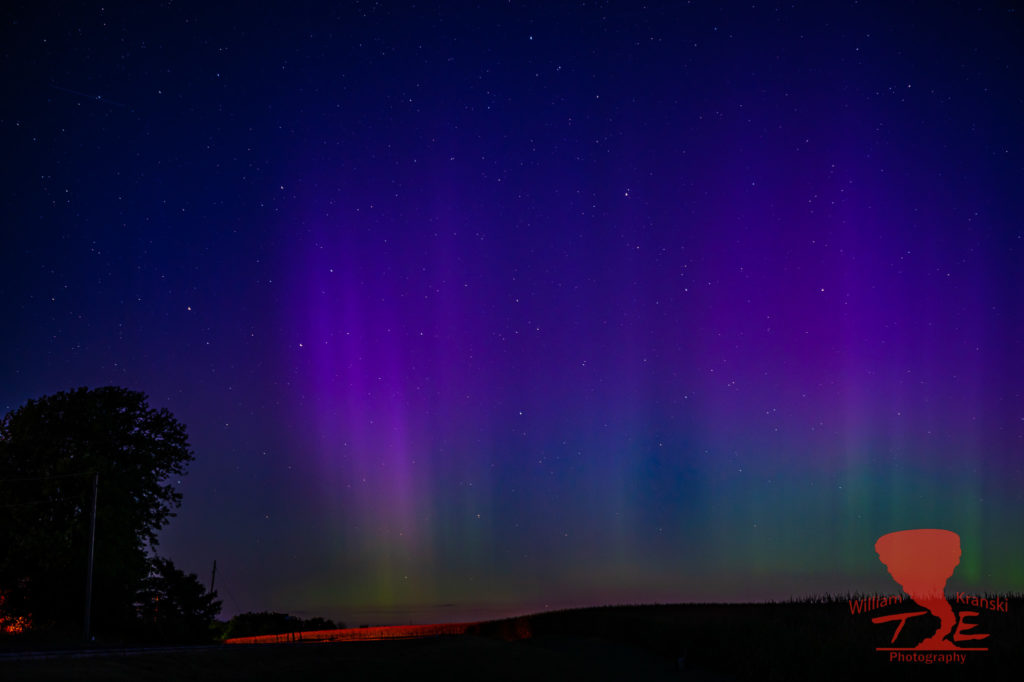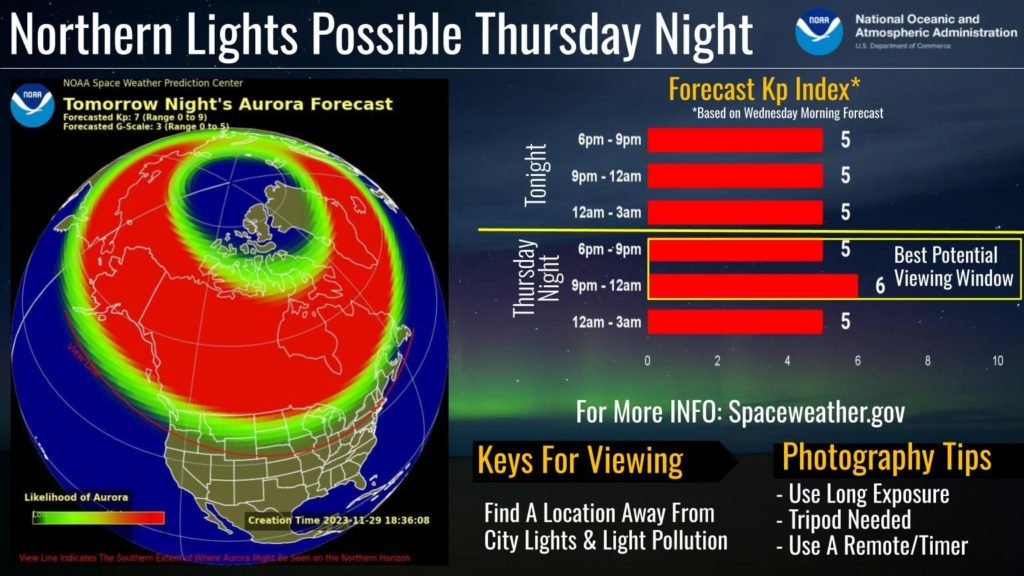Will the Northern Lights Be Visible in Iowa?

In the vast expanse of the cosmos, our sun occasionally treats us to mesmerizing displays of celestial fireworks. This Tuesday was no exception, as a solar flare unleashed three distinct coronal mass ejections (CMEs) on the sun’s surface, culminating in a rare and awe-inspiring phenomenon known as a “halo CME.” But as we marvel at the beauty of this cosmic event, scientists are sounding a note of caution, predicting the possibility of a severe geomagnetic storm here on Earth later this week.
What is a Coronal Mass Ejection (CME)?
A coronal mass ejection is a powerful release of charged particles from the sun, hurtling outward at speeds reaching an astonishing 2,000 miles per second. The fastest Earth-directed CMEs can reach our planet in as little as 15-18 hours. Slower CMEs can take several days to arrive. They expand in size as they propagate away from the Sun and larger CMEs can reach a size comprising nearly a quarter of the space between Earth and the Sun by the time it reaches our planet. This particular ejection originated from a sunspot that happened to be directly facing Earth, amplifying the potential impact on our planet.

What to Expect:
As these charged particles make their way towards Earth, scientists are issuing warnings of a severe geomagnetic storm. The peak of this storm is forecasted to arrive during Friday morning, with the best chance of witnessing its effects likely occurring overnight Thursday.
Space weather forecasters are currently predicting a G3 geomagnetic storm, classifying it as “strong” on NOAA’s 1 to 5 geomagnetic storm scale. Such storms have the potential to intermittently disrupt satellite navigation and high-frequency radio communications. Additionally, those residing in regions with clear night skies, might be treated to a rare spectacle—the northern lights, which will be visible further south than usual.
Locations as far south as Iowa to Oregon and Ohio will have the potential to view the northern lights overnight Thursday into Friday.
The Solar Flare’s Magnitude:
The solar flare that triggered this cosmic event was detected by NASA’s Solar Dynamics Observatory satellite. While it fell just short of reaching category X, the most potent classification on the solar flare scale, it was still a formidable burst of energy that set the stage for the subsequent coronal mass ejections.
Items to Note:
It should be noted that predicting an auroral event days in advance is difficult, and will require watching data coming in hours before the event. In addition, clouds will also be setback as a weather system will be moving into the state brining the potential for precipitation. However, there may be enough breaks in the clouds, especially across northern Iowa for the potential to get a glimpse of the lights.
Lastly, if you are heading out to get a glimpse at the lights, to the naked eye, the lights will look like a faint glow. The photos you see on social media are captured with a camera that has been adjusted to have a longer exposure time to make the lights more vibrant. Newer cellphone cameras can also have similar settings where you can capture a better image than what you would see with the naked eye.
Check back to our social channels as we get closer for the latest data updates.